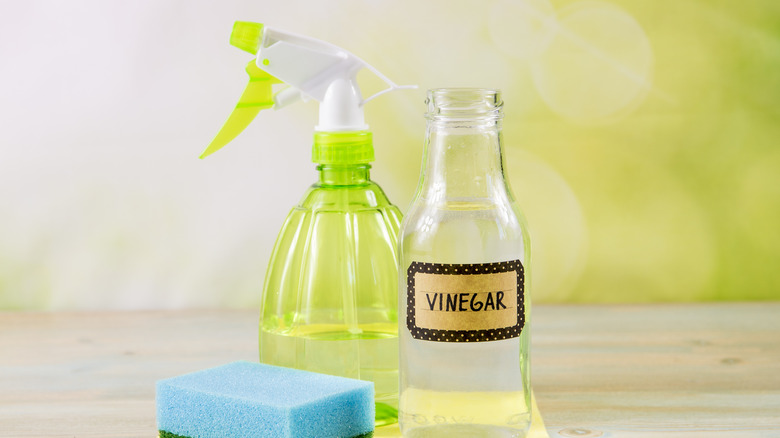As your garden hose ages, it becomes susceptible to corrosion. This can take many forms, from rusty metal fixtures and fittings and sediment plugs to hard water calcium carbonate deposits (scale) and bacterial build-up. These issues can cause your hose to clog or malfunction, damage your plants, harm your family’s health, or even fall apart. A simple, eco-friendly, and safe gardening hose hack is likely sitting in your pantry right now: a big bottle of white vinegar.
Vinegar is a safe alternative to bleach or harsh chemical cleaners for deoxidizing (de-rusting), de-scaling, and disinfecting your garden hose. The chemical compound in vinegar responsible for achieving these impressive feats is acetic acid. Vinegar is made by distilling grains into ethyl alcohol and fermenting that solution, turning it into acetic acid in water. With a pH score as low as 2.2, vinegar cleans by dissolving minerals and stains and creating an environment too acidic for most microbes to survive. You can even get rid of mold using vinegar! A word of caution, however: Vinegar may erode or melt rubber, so only use it to clean hoses made of polyurethane or vinyl.
How to clean your garden hose with vinegar

Distilled white vinegar is the go-to brew for this method because it’s cheap and transparent. You can pick up a bottle for under $5 — this 128-fluid-ounce bottle of Great Value Distilled White Vinegar from Walmart will cost you only $3.76. You can use rice, malt, or even apple cider vinegar, but expect to pay more for a bottle and potentially have some unwanted side effects like staining. You’ll also need a large plastic tub (enough to fit your entire hose in, coiled), a funnel and pouring jug, some gloves (if you have sensitive skin), a scrub sponge or brush, and access to a freshwater source.
Disconnect your garden hose from the tap and take off the hose head or gun. You need to ensure both sides of the hose are open. Fill your plastic tub three-quarters of the way with water, and add about half of the vinegar bottle. Dip one end of the hose into the tub and slowly coil it so it’s submerged. Hold the other end of the hose vertically and fit the end with a funnel. Use the jug to scoop up the vinegar solution and pour it into the funnel until the entire length of the hose is filled with water. Leave the hose to soak in the tub overnight. The next day, scrub the length of the hose to clean the exterior. Finally, reconnect the hose and run water through it to dislodge loosened debris.